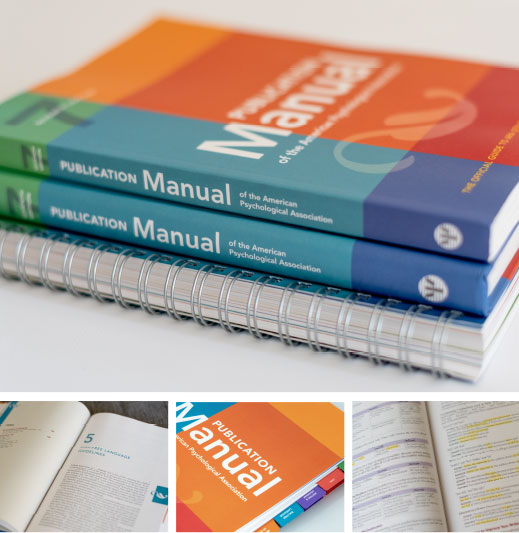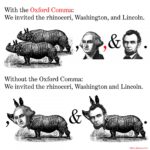Stop the presses! The American Psychological Association (APA) has published a significant update to the venerated and widely-used stylebook, The Publication Manual of the American Psychological Association. APA style is the preferred style guide used across a wide range of disciplines, including the sciences, education, and social sciences including psychology and sociology. APA’s 7th edition changes are relevant for anyone studying or working in those fields.
While the seventh and most recent edition of the APA manual was officially published in October 2019, additional updates are made regularly to reflect the rapid evolution of style during the information age. This edition includes changes to citation, references, formatting, and more. Generally well-received, the new edition has been praised for simplifying these processes.
Before implementing changes in a major document like a dissertation, make sure that your university is also adopting APA seventh edition changes in their own style guide. Some universities have their own conventions that may not directly adhere to APA guidelines, so it’s always a good idea to check.

Changes found in The Publication Manual of the American Psychological Association, 7th Edition are listed in detail in the APA’s Guide to What’s New. A selection of the most significant changes include revisions to:
- In-text citations
- References
- Formatting
- Style
In-Text Citations
The changes to in-text citations in The Publication Manual of the American Psychological Association, 7th edition reflect a desire to streamline the citation process. One of the biggest changes concerns how many authors are listed in an in-text citation. While APA used to allow for listing up to three authors in multi-author texts, it is now limited to one.
Sixth Edition: (Smith, Jones, & Washington, 2021)
Seventh Edition: (Smith, et al., 2021)
This method saves some space and limits confusion. Additional changes to in-text citations include adding a new source category for oral traditions and quotations from research participants, which no longer need an in-text citation.
References
Several important changes were made to how references are treated in The Publication Manual of the American Psychological Association, 7th edition. Since the last major update to this was in 2009, many of the alterations made in this edition focus on the treatment of electronic sources. While most of the changes are minor, you’ll want to note them to keep your references up to date.
Multiple author sources
Reference entries may now include up to 20 authors for a single text. Previous editions of the APA manual allowed for only seven authors to be listed per entry.
DOI entries
Digital Object Identifiers (DOIs) will no longer include “DOI” before the entry number. DOIs and URLs should also now be hyperlinks on the reference page, and it is no longer advised to include the phrase “Retrieved from,” unless a retrieval date is required.
Sixth edition: DOI: 10.1290.09897777.2020.1975887
Seventh edition: https://doi.org/10.1290.09897777.2020.1975887
Publisher
The publisher’s city and state should now be omitted from the reference page. For ebooks, the format should also be omitted.
Sixth edition: Smith, Jane. (2020) Space flight. [Kindle version] New York, NY: Doubleday.
Seventh edition: Smith, Jane. (2020). Space flight. Doubleday.
Online sources
Changes have also been made for how to reference online sources, including podcasts, social media posts, YouTube videos, and, in a true reflection of the times, emojis and hashtags.
Formatting
Running Heads
Off with their (running) heads! In the seventh edition, APA is making further distinctions between student papers and professional publications. Running heads (a short version of the paper’s title in the heading) should no longer be used in student papers. In professional articles, the phrase “Running head” should be stricken, though the title and page number should still appear.
Fonts
APA has broadened its horizons, at least where fonts are concerned. In addition to the classic Times New Roman 12-point font, Calibri, Arial, and Georgia fonts (11-point) are now permitted, and Lucinda Sans Unicode can be used in 10-point font.
Style
Perhaps the biggest changes seen in The Publication Manual of the American Psychological Association, 7th edition relate to style. These changes in the rules show a notable loosening of restrictions and a move to a more inclusive approach to style that reflects a greater sense of diversity and belonging. These changes will also allow for a more streamlined sentence structure.
Pronoun usage
Rather than writing “he or she,” APA now recommends opting for a singular “they.”
Sixth edition: When approaching a text, he or she should take extensive notes.
Seventh edition: When approaching a text, they should take extensive notes.
This change also reflects a desire for writers to adhere to each individual’s personal pronouns (he/his, she/her, they/them).
Bias-free language
The updates to the APA manual show an effort to negate bias related to age, disability, race, ethnicity, gender, and sexual orientation. Writers are advised to use “person-first” language that acknowledges the human before the condition. For instance, instead of writing about “an autistic person,” it is preferable to say “a person with autism.”
Specificity
Aim to be as specific as possible when describing a collective group of people. For example, “Mexican American” and “Cuban American” are more specific than “Latino” or “Latinx.” This also extends to gender. In some cases, it may be more appropriate to identify women as “cisgender women” if discussing a specific issue. In the seventh edition, APA also recommends looking to specific individuals and groups for guidance on how they refer to themselves, and recognize that preferred terms may not be agreed upon and may change in the future.
APA 7th Edition Changes: Summary
When considering changes related to style, keep in mind that style is ever-evolving. What is deemed appropriate this year may not be next year, and it is a good idea to look for updates for guidance. A lot of change took place in the decade between the sixth and seventh editions of The Publication Manual of the American Psychological Association, and it is reasonable to expect continued evolution. As a writer, particularly if you are actively pursuing scholarly publication, it is advisable to consider style carefully when you are writing and revising your work.





